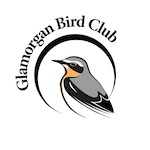Introduction
Why?
A knowledge of the distribution and abundance of birds is key to the understanding of their ecology and conservation. Every year the Glamorgan Bird Club publishes an annual bird report that collates all the records submitted during that particular year. By its very nature this report merely provides a general snapshot of the state of Eastern Glamorgan's avifauna. A more complete picture requires a systematic approach with fuller geographical and seasonal coverage.
In November 2007 the BTO, in partnership with the Scottish Ornithologists' Club and Birdwatch Ireland, began a project aimed at producing new distribution and abundance maps in a National Atlas, covering both winter and breeding seasons, for the period 2007-2011. Participation in this survey presented the opportunity to gather data suitable for a local atlas as the basic survey recording unit was the tetrad (2 km by 2 km OS grid square).
How?
Accordingly, the Glamorgan Bird Club initiated a project aiming to gather data for all 421 tetrads in its current recording area of East Glamorgan. Original ideas of publishing in book form, as an update of
Other local bird organisations adopted a similar approach, and after assessing the options Chris Dee (Garganey Consulting) was engaged to develop an atlas website for East Glamorgan. He had already done so for his own county, Hertfordshire, and also for Bedfordshire and Cornwall. The structure, appearance and ease of use of the resulting designs met our objectives.
What?
The species distribution maps show the results from 4 surveys. Three of them were carried out on a national scale, driven by the BTO, with the data supplied by them under an agreement with the Glamorgan Bird Club. The other was a locally organised survey. The maps for some species, especially raptors, show distributions at the 10km square level only or not at all in order to avoid divulging sensitive information especially of breeding locations for protected or scarce species.
2007-11 Atlas
- Survey coverage: National
- Recording periods:
- Winter: November - February inclusive, over 4 winters starting in 2007/2008.
- Breeding: April - July inclusive over 4 summers starting in 2008.
- Methodology:
- Roving Records - Species lists for a 10-km square. Records could be submitted at tetrad level (to accommodate the needs of local atlases).
- Timed Tetrad Visits - Two visits to a tetrad in both seasons, each visit of at least one hour but more often two hours. The aim was to count all the birds encountered, hoping to determine species abundance.
- Breeding season records included a code to indicate the level of breeding evidence observed - Possible, Probable or Confirmed (see Breeding Evidence Codes).
- Additional data from other sources including the Breeding Bird Survey, Wetland Bird Survey, Nest Record Scheme, Ringing Scheme, Garden Birdwatch and Birdtrack were incorporated into the national database, along with data supplied by local bird clubs, including Glamorgan Bird Club.
1984-89 Breeding Atlas
- Survey coverage: Glamorgan (organised by the Ornithological Section of the Cardiff Naturalists' Society).
- Recording period: April - July inclusive over 6 years.
- Methodology: Species Lists - for all tetrads in a 10 km square.
- Records included a code to indicate the level of breeding evidence observed - Possible, Probable or Confirmed.
1981-84 Winter Atlas
- Survey coverage: National
- Recording period: mid-November - end of February over 3 winters.
- Methodology: Species Lists - Counts of species in a 10km square during a visit of at least 1 hour.
- Supplementary Records - from non-timed visits.
1968-72 Breeding Atlas
- Survey coverage: National
- Recording period: April - July inclusive over 5 years.
- Methodology: Species Lists - for a 10km square.
- Casual records - additional species from any 10 km square.
- Records included a code to indicate the level of breeding evidence observed - Possible, Probable or Confirmed.
Breeding Evidence Codes
Non-breeding
- F Flying over
- M Species observed but suspected to be still on Migration
- U Species observed but suspected to be sUmmering non-breeder
Possible breeder
- H Species observed in breeding season in suitable nesting Habitat
- S Singing male present (or breeding calls heard) in breeding season in suitable breeding habitat
Probable breeding
- P Pair observed in suitable nesting habitat in breeding season
- T Permanent Territory presumed through registration of territorial behaviour (song etc) on at least two different days a week or more part at the same place
- D Courtship and Display (judged to be in or near potential breeding habitat; be cautious with wildfowl)
- N Visiting probable Nest site
- A Agitated behaviour or anxiety calls from adults, suggesting probable presence of nest or young nearby
- I Brood patch on adult examined in the hand, suggesting Incubation
- B Nest Building or excavating nest-hole
Confirmed breeding
- DD Distraction-Display or injury feigning
- UN Used Nest or eggshells found (occupied or laid within period of survey)
- FL Recently FLedged young (nidicolous species) or downy young (nidifugous species). Careful consideration should be given to the likely provenance of any fledged juvenile capable of significant geographical movement. Evidence of dependency on adults (e.g. feeding) is helpful. Be cautious, even if the record comes from suitable habitat.
- ON Adults entering or leaving nest-site in circumstances indicating Occupied Nest (including high nests or nest holes, the contents of which can not be seem) or adults seen incubating
- FF Adult carrying Faecal sac or Food for young
- NE Nest containing Eggs
- NY Nest with Young seen or heard
Distribution map species lists
Breeding change maps
Species richness maps
© 2014 Glamorgan Bird Club
